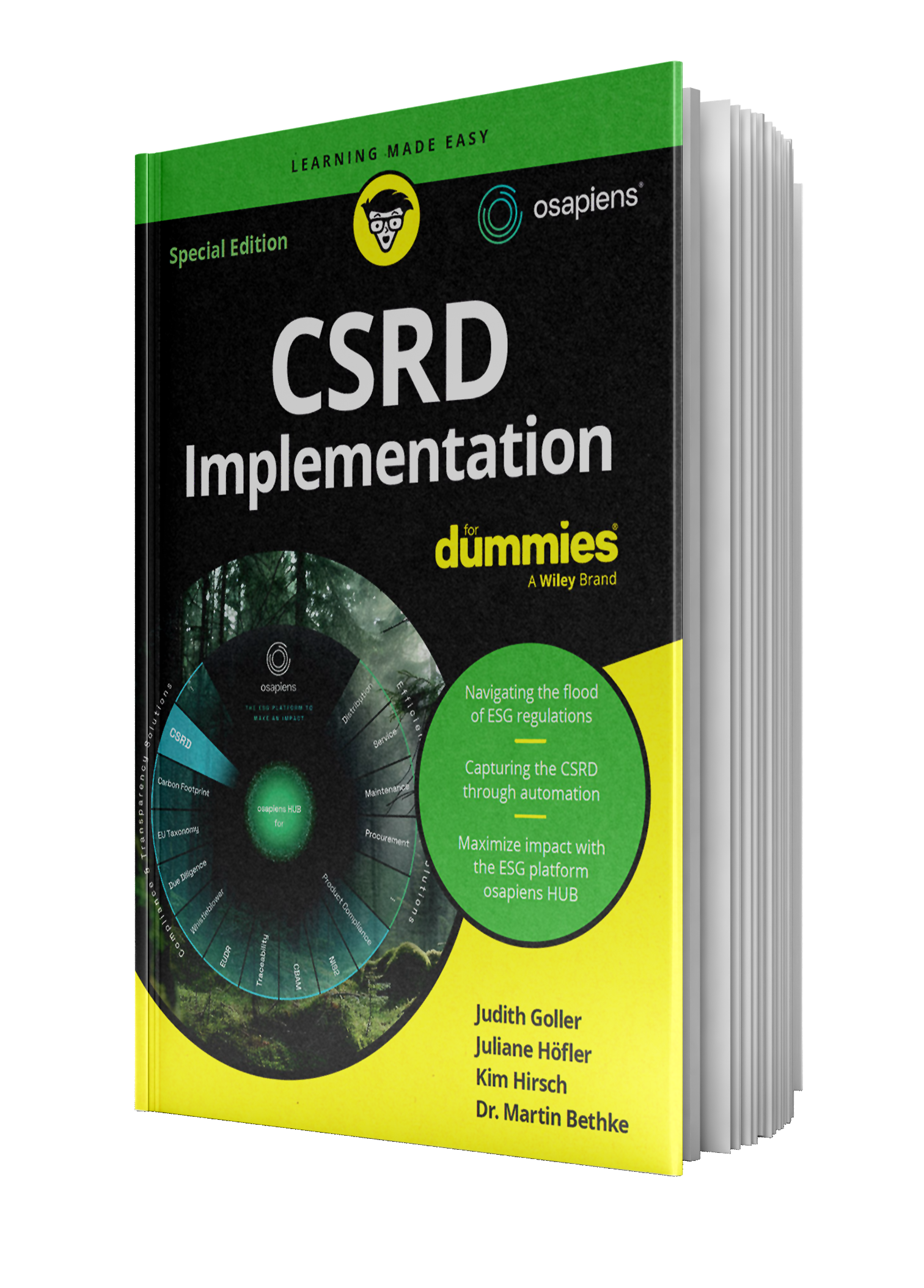
Automate the process and efficiently achieve CSRD compliance in just five steps with osapiens HUB for CSRD:
Understand the requirements
Familiarise yourself with the ESRS requirements. Benefit from expert insight, such as the book "CSRD Implementation for Dummies", which explains all the key information in a clear and simple way.
Conduct a materiality assessment
Systematically assess which ESG issues are material to your company. Review the ESRS categories and create appropriate IROs (Impact, Risk, Opportunity) for all relevant topics.
Assess IROs
Once the IROs (Impact, Risk, Opportunity) are identified, evaluate their materiality. Only the material issues need to be reported in the sustainability report - osapiens HUB for CSRD helps you to set the right focus.
Meet reporting requirements
Create a compliant report with all required disclosures. The osapiens solution automatically handles XBRL tagging, ensuring that all relevant information is properly structured and easily accessible.
Submit in ESEF format
Your report needs to be submitted in the EU compliant ESEF format. With the osapiens solution, you can export it with just a few clicks - accurate, on time and hassle-free.
Sign up now and get started
Receive a non-binding quote within 24 hours
Access weekly live demos and Q&A sessions
Gain detailed insight into product features
Key Benefits:
Effortless CSRD compliance: All-in-one solution for quick and efficient implementation.
Automated workflows: Collect and analyze data with minimal manual effort.
IRO library: Pre-defined templates for streamlined materiality analysis.
Audit-ready reports: Built-in XBRL tagging for maximum transparency.
Automatic updates: Stay up-to-date with the latest ESG regulations.
Easy-to-use: Intuitive interface requires minimal effort from your team.
What are ESRS?
The European Sustainability Reporting Standards (ESRS) are the basis for sustainability reporting. They provide clear guidelines on which sustainability topics companies should report on to ensure transparency and comparability.
The ESRS are divided into four main categories:
- General Requirements (ESRS 1 & 2): Guidelines on report structure, content and company information.
- Environmental Standards (ESRS E1-5): Focus on climate change, biodiversity and resource management.
- Social Standards (ESRS S1-4): Cover labor conditions, human rights, and social impacts.
- Governance standards (ESRS G1): Address corporate governance and internal policies.
What are IROs?
IROs (Impacts, Risks, Opportunities) are a key component of the double materiality assessment. They help companies identify the issues that are material to their sustainability reporting:
- Impacts: Positive or negative effects a company has on its surrounding environment, such as environmental protection measures or CO2 emissions.
- Risks: Financial risks arising from ESG-related factors, such as regulatory changes or reputational damage.
- Opportunities: Financial opportunities, such as competitive advantage through sustainable innovation.
Get Ready for CSRD
Deepen your knowledge of key CSRD topics
Gain practical insights into ESRS, the importance of IROs, and how to streamline your sustainability reporting - all in our blog articles:





